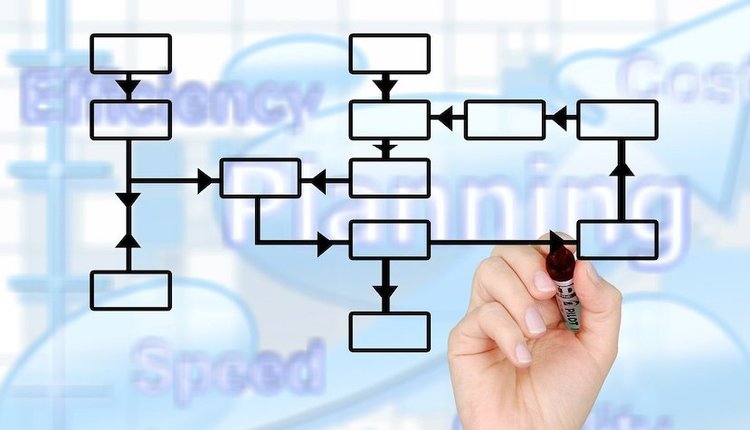
Last time, we briefly analyzed nine of the most common issues that prevent an effective implementation of electronic document management (EDM) in organizations. Basically, they were all related to the lack of knowledge and the lack of will to get that knowledge. This month, we are going to approach the same subject from a different perspective but, nevertheless, a real day-to-day experience.
Organizations are like a human body: They are dependent on the health of individual organs (departments), which are, in turn, dependent on their own specialized cells (staff). At the end of the day, the performance of the organization is entirely dependent on the commitment and professionalism of its staff. Introducing an electronic document management (EDM) solution is one of the most challenging goals, since it does, in fact, turn every rock over throughout the organization—it is not just another software solution.
People are afraid of change for different reasons. Some will assume that the change is intended to eliminate their jobs. Others will believe that if something goes wrong with the new solution, the organization will blame them for whatever reason. Even top management may not be too keen on managing this kind of change, often because they don’t want the hassle of involving staff with the new solution either due to their lack of knowledge or their weak leadership.
When facing the implementation of EDM, the typical path for the staff’s feelings is the following: (1) denial, (2) anger, (3) confusion, (4) depression, (5) acceptance and (6) restored confidence. Denial is the first reaction. It is a survival type of response, such as, “Nope, not for me.” Anger comes in the second step when people, mainly those who should have been involved at the project level, are facing the fact that, like it or not, they will have to use EDM. Confusion comes from the lack of references and correlation between people’s individual jobs and the functionalities of the EDM solution. Depression is the rock-bottom state of consciousness for those that were not properly supported during the previous stages on the individual benefits of EDM—a transient state but, surely, a very unpleasant one.
Acceptance only begins to appear when it is clear that EDM brings satisfactory answers to the age-old “What’s in it for me?” question. Restored confidence is assured when people are faced with the fact that EDM will improve their professional output—or whatever is the core business of their function in the organization. If their core business output is improved, then recognition is improved, and it is a win-win situation.
It is quite common that the average organization does not really understand EDM or, at least, has no clue about the real gain possibilities embedded in the concept. So, one never needs something that one does not know exists. This is a very slippery ground because some staff members that should know about EDM in order to guide their own organizations are not “strong” enough to recognize their lack of knowledge and do not act in order to get that knowledge. Therefore, the decision of “shared folders will do the job,” or “we will use email to push documents,” or “we already have everything in PDF” will prevent EDM in the organization. This decision is not due to an objective assessment of the needs but only due to a lack of knowledge that someone is desperately trying to hide.
EDM allows for savings—a lot of savings—more specifically, financial savings. Who is the party interested in this? The owner of the money. Most of the times, this “owner” is either very far away or very high on the corporate ladder to get involved with decisions concerning EDM. Hence, these decisions are left to middle management, who are happily living their professional lives. The last thing they want is to rock the boat either by requiring or suggesting a new investment, upsetting staff and other middle managers with the EDM solution or even by assuming that they are putting their necks out if something goes wrong even for a tiny bit. EDM is a must-have in the organization for any money owner as far as he/she can be directly faced with the benefits.
Even in a situation where there is a good understanding of EDM and a green light to go ahead, there are a number of factors that still depend on the proficiency and objectivity of staff in order to allow for cost-versus-risk optimization of the solution found. For example, let’s look at the technological factors that have to do with open source versus proprietary software. Open source software is not free; their licenses are, but it is the total cost of ownership (TCO) that matters. An EDM solution will include the cost of the licenses but will also include much more than that, such as consultancy, configuration of whatever tool to the specific requisites of the organization, integration with other tools, training, documentation—well, the works. The TCO must then be compared with the existing internal costs and lack of revenue in order to have a clear decision on what solution to implement. Last, but not least, is the legal stuff. The legal department must research the solution in order to define what can or can’t be done when using EDM to minimize the risks associated with any legal action and the definition of policies, such as retention and destruction.
EDM implementation is not a trivial software implementation. In fact, I would say it is not a software implementation at all. It is a new perspective on how to manage an organization where software is one of the tools needed, but people’s adjustments and input from a lot of organizational departments are the other tools required as well.
Organizations are like a human body: They are dependent on the health of individual organs (departments), which are, in turn, dependent on their own specialized cells (staff). At the end of the day, the performance of the organization is entirely dependent on the commitment and professionalism of its staff. Introducing an electronic document management (EDM) solution is one of the most challenging goals, since it does, in fact, turn every rock over throughout the organization—it is not just another software solution.
People are afraid of change for different reasons. Some will assume that the change is intended to eliminate their jobs. Others will believe that if something goes wrong with the new solution, the organization will blame them for whatever reason. Even top management may not be too keen on managing this kind of change, often because they don’t want the hassle of involving staff with the new solution either due to their lack of knowledge or their weak leadership.
When facing the implementation of EDM, the typical path for the staff’s feelings is the following: (1) denial, (2) anger, (3) confusion, (4) depression, (5) acceptance and (6) restored confidence. Denial is the first reaction. It is a survival type of response, such as, “Nope, not for me.” Anger comes in the second step when people, mainly those who should have been involved at the project level, are facing the fact that, like it or not, they will have to use EDM. Confusion comes from the lack of references and correlation between people’s individual jobs and the functionalities of the EDM solution. Depression is the rock-bottom state of consciousness for those that were not properly supported during the previous stages on the individual benefits of EDM—a transient state but, surely, a very unpleasant one.
Acceptance only begins to appear when it is clear that EDM brings satisfactory answers to the age-old “What’s in it for me?” question. Restored confidence is assured when people are faced with the fact that EDM will improve their professional output—or whatever is the core business of their function in the organization. If their core business output is improved, then recognition is improved, and it is a win-win situation.
It is quite common that the average organization does not really understand EDM or, at least, has no clue about the real gain possibilities embedded in the concept. So, one never needs something that one does not know exists. This is a very slippery ground because some staff members that should know about EDM in order to guide their own organizations are not “strong” enough to recognize their lack of knowledge and do not act in order to get that knowledge. Therefore, the decision of “shared folders will do the job,” or “we will use email to push documents,” or “we already have everything in PDF” will prevent EDM in the organization. This decision is not due to an objective assessment of the needs but only due to a lack of knowledge that someone is desperately trying to hide.
EDM allows for savings—a lot of savings—more specifically, financial savings. Who is the party interested in this? The owner of the money. Most of the times, this “owner” is either very far away or very high on the corporate ladder to get involved with decisions concerning EDM. Hence, these decisions are left to middle management, who are happily living their professional lives. The last thing they want is to rock the boat either by requiring or suggesting a new investment, upsetting staff and other middle managers with the EDM solution or even by assuming that they are putting their necks out if something goes wrong even for a tiny bit. EDM is a must-have in the organization for any money owner as far as he/she can be directly faced with the benefits.
Even in a situation where there is a good understanding of EDM and a green light to go ahead, there are a number of factors that still depend on the proficiency and objectivity of staff in order to allow for cost-versus-risk optimization of the solution found. For example, let’s look at the technological factors that have to do with open source versus proprietary software. Open source software is not free; their licenses are, but it is the total cost of ownership (TCO) that matters. An EDM solution will include the cost of the licenses but will also include much more than that, such as consultancy, configuration of whatever tool to the specific requisites of the organization, integration with other tools, training, documentation—well, the works. The TCO must then be compared with the existing internal costs and lack of revenue in order to have a clear decision on what solution to implement. Last, but not least, is the legal stuff. The legal department must research the solution in order to define what can or can’t be done when using EDM to minimize the risks associated with any legal action and the definition of policies, such as retention and destruction.
EDM implementation is not a trivial software implementation. In fact, I would say it is not a software implementation at all. It is a new perspective on how to manage an organization where software is one of the tools needed, but people’s adjustments and input from a lot of organizational departments are the other tools required as well.
Joao Penha-Lopes specializes in document management since 1998. He holds two postgraduate degrees in document management from the University Lusofona (Lisbon) and a PhD from Universidad de Alcala de Henares (Madrid) in 2013, with a thesis studying the economic benefits of electronic document management (EDM). He is an ARMA collaborator for publications and professionally acts as an advisor on critical information flows mostly for private corporations. Follow him on Twitter @JoaoPL1000.
















